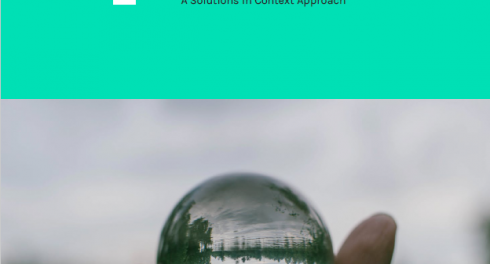How can a funder collaborative engage with evidence to improve grantmaking practice? The first step is to ask the right learning questions.

Photo: qimono at Pixabay
In 2010, the Transparency and Accountability Initiative, a funder collaborative, commissioned the seminal McGee & Gaventa synthesis report, Review of Impact and Effectiveness of Transparency and Accountability Initiatives, to seek answers to the question “What does the evidence base say about how transparency translates into accountability outcomes?” Since then, the number of global transparency & accountability initiatives as well as the number of studies looking at their effectiveness have grown. By 2016, TAI members were looking towards second-generation approaches to transparency and accountability work. Where was the TAP field in terms of evidence quantity and quality? What could we learn from the current body of evidence to design and implement more effective TAP work? We partnered with MIT’s Governance Lab (MIT GOV/LAB) and Twaweza to explore recent evidence related to efforts to strengthen transparency, government accountability, and citizen participation (TAP).
Two years later, it’s safe to say that collaborative learning is not always a straightforward undertaking. But our efforts to dive deep into the TAP evidence have yielded valuable learning experiences and a useful Learning from Evidence series of products. This blog is the first of a series of these products that we hope will also be useful for others working in the TAP space or pursuing learning efforts in a collaborative model.
Why dive deep? Our learning needs and context
The Learning from Evidence initiative started as a request from TAI members to draw policy- and practice-relevant insights from existing TAP evidence that would speak to their programs and the practitioners they support.
At the same time, TAI members were taking stock of lessons learned from the collaborative’s work to date and shaping the next phase of work for TAI. The collaborative’s membership base evolved, our current strategic priorities were just emerging, and we transitioned from a TAP field-building model to one focused on strengthening funder member grantmaking practices to support the TAP field. In this context, the Learning from Evidence initiative also served an internal learning need to connect the growing evidence base to these new shared strategic TAP priorities.
Where did we start?
With six TAI funder members, how might we possibly harmonize interests across members’ diverse strategies and approaches without watering down the relevance of the results?
During the inception phase, TAI lead research partners Lily Tsai and Varja Lipovsek (later supported by other MIT GOV/LAB researchers) interviewed TAI members to understand what questions motivated them, which parts of their theories of change were they most vested in (or most skeptical of), and how they saw as the role and use of evidence in their work.
The process of inquiry ultimately yielded TAI’s Pathways to Change Map. The Map is not intended to be a comprehensive picture of the TAP field overall, but it does represent TAI members’ shared hypotheses and assumptions around TAP change, using a common language. And while no single member can address all of these pathways, collectively their grantmaking practices can cover much more ground across our shared thematic outcomes.
In retrospect, this was one of the early learning moments for TAI’s current strategy – and certainly one we returned to during this initiative: asking good questions around transparency and accountability evidence is itself a key learning practice.
The learning questions on the Map underscore the importance of using evidence in context – that is, framing questions specific to the accountability actor(s) and accountability outcome(s) of interest such that evidence can be meaningfully applied. It is far less useful – and often not possible – to find evidence to address questions that are very broad or that cover too many of these pathways.
Which waters to test? Shaping our learning and evidence agenda
With many potential learning questions, we ultimately prioritized our evidence inquiry around three TAI strategy-relevant topics, including:
- Taxation: What are the effects of taxation on government accountability?
- International norms and standards: What are the effects of transparency and accountability international norms and standards on the accountability behaviors of citizens and “accountability actors”?
- Information and accountability: How does access to information affect government accountability?
Through this initiative, TAI’s research partners generated a range of different products – including Evidence Briefs, which are memo-style summaries of evidence; Evidence Syntheses, which offer more detailed review and analyses of evidence; and Learning Tools, which include memo-style guidance on how to navigate evidence and an interactive online tool to explore evidence in context. We look forward to sharing the Learning from Evidence series of products with the TAP field through TAI’s and our research partners’ virtual platforms.
The Learning from Evidence series documents a learning process undertaken by the Transparency and Accountability Initiative to engage with and utilize the evolving evidence base in support of our members’ transparency and accountable governance goals. We are pleased to have partnered with MIT’s Governance Lab and Twaweza on this initiative. This series comprises a variety of practice- and policy-relevant learning products for funders and practitioners alike, from evidence briefs, to more detailed evidence syntheses, to tools to support the navigation of evidence in context.
Learning from Evidence Series
- Blog Deep Dive: Shaping Learning Questions in a Funder Collaborative
- Resource TAI Pathways to Change Map
- Blog Taxation without representation? Do international norms matter?
- Evidence brief Effect of International Standards on Accountability Behaviors
- Evidence brief Taxation and Accountability in Developing Countries
- Blog How would this work in my context? A practical tool to include contextual factors in reviewing evidence on governance initiatives
- Brief How to Learn from Evidence: A Solutions in Context Approach
- Video Learning from Evidence
- Evidence brief Information and Accountability: Preface to Evidence Syntheses of Within-Government and Citizen-Government Accountability Pathways
- Evidence syntheses Information and Accountability: Within-Government and Citizen-Government Accountability Pathways
This blog was written by Alison Miranda (Senior Learning Officer at TAI).

